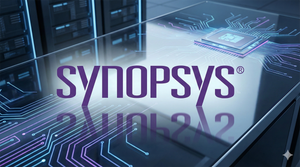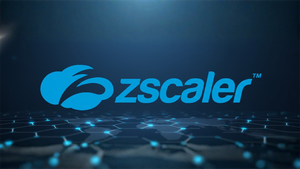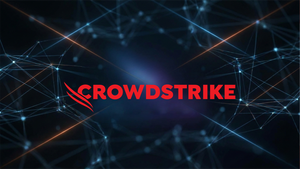Helping offshore clients solve complex problems associated with offshore wind and submarine cable projects
SOURCE: Tetra Tech
DESCRIPTION:
Nick Welz is director of Tetra Tech’s submarine cable services group and has worked in the submarine cable industry for more than 15 years. His background is in commercial fisheries science, and he has experience planning, permitting, and surveying offshore projects in more than 30 nations around the world, including work on thousands of kilometers of installed cables operating worldwide.
Nick has successfully managed numerous large-scale, multidisciplinary projects involving marine and terrestrial geophysical, geotechnical, biological, and protected species surveys, as well as agency coordination, permitting, and supply chain liaison scopes. His projects range from single state submarine cables to offshore wind export cable work to transoceanic, fiber optic systems.
He has a Bachelor of Science in Business Management and Environmental Studies from Skidmore College and a Master of Science in Fisheries Science from the University of Rhode Island.
What changes have you seen within the offshore wind industry over the last 10 years?
A decade ago, there were far fewer offshore wind projects under development, especially in the United States. From a submarine cable standpoint, common scopes for Tetra Tech included transoceanic fiber cables, as well as point-to-point HVDC power cable interconnections. As the U.S. offshore wind industry began to develop, there was a push to have several, smaller projects to test technology, establish the supply chain, and solidify permitting workflows to be applied to commercial scale wind facilities further offshore in the future. Tetra Tech worked on several of these projects, including the Block Island Wind Farm and its associated cables and Hywind Maine and Coastal Virginia Offshore Wind pilot projects. Each of these projects presented unique submarine cable challenges and fortified the foundation of our submarine cable services practice.
Now, nearly every coastal state in the United States is considering offshore wind power to meet increasingly ambitious greenhouse gas and renewable energy goals, which is driving the industry forward. Projects on the East Coast can use proven, commercial-scale, fixed-bottom foundation, turbine, and offshore substation technology appropriate for the relatively shallow waters of the continental shelf.
The floating wind turbine technology required for projects installed in deeper waters off the West Coast, Hawaii, and the Gulf of Maine is still being developed. Dynamic inter-array cables will be required for floating turbines connected to one another, and these cables will remain within the water column rather than being buried in the seabed. Considerations include potential protected species impacts, issues with vessel traffic management, and possible commercial fishing implications. Export cables for floating wind turbine projects will be required to bring the wind power to the coast from offshore. Precisely how this will happen depends upon how these facilities will be configured at a commercial scale. New technological developments may change the current perspective on floating turbines and associated component designs completely.
What are the considerations for offshore wind projects in different geographies?
Tetra Tech works with offshore wind developers from the earliest stages of the process, helping them scrutinize a variety of issues when considering new offshore wind projects in differing geographies that require attention to different key data points. Establishing the need for additional power generation and pursuing the power purchase agreement are the first steps in a process that combines energy supply and demand needs with technical, economic, environmental, engineering, and operations issues. Depending on the geography, developers must mitigate impacts to marine navigation, fisheries, existing assets, and even military activities. Further, physically delivering offshore energy to onshore facilities and interconnecting them efficiently increases the challenges of any project and is difficult for offshore wind along the U.S. east coast.
Tetra Tech has supported permitting of 15 U.S. offshore wind projects in the last 10 years and understands the entire planning process, including siting turbines and offshore substations, routing submarine cables, seeking appropriate shore landing sites, mapping efficient terrestrial routes, and eventually making the grid interconnection. The Tetra Tech offshore team leverages years of experience—including a decade of U.S. experience—to facilitate informed decision-making by our clients. Our ability to streamline the lengthy and uncertain permitting process based on data acquired from past project successes is unparalleled in the industry.
What are the biggest challenges that you see in offshore wind today?
Planning and developing a financially viable project over a multiyear period is a significant challenge in and of itself for any offshore wind developer. Changing financial markets, regulatory environments, and political regimes can combine to make a complex process feel even more ambiguous. Navigating this process alongside passionate stakeholders with differing needs and uses in the project area adds to the challenge.
For example, commercial fisheries have spent decades seeking mutually beneficial coexistence with one another and other marine activities, such as commercial shipping. Adding infrastructure to the delicate offshore balance can seem daunting. Existing infrastructure, such as fiber optic cables, were installed without consideration for future high voltage export cable crossings, and coming to a crossing agreement with these asset owners will require lengthy negotiations. The existing electrical grid simply wasn’t designed to bring generated power from the coastlines into the cities. Existing facilities, such as substations, will need to be enhanced, and local utilities and grid managers will need to work with developers on these challenges. In all these situations, cooperation to reach a fair and equitable solution is key.
The Tetra Tech offshore team has helped our clients navigate these types of issues for years in various geographies. We can provide successful example solutions from prior work across a broad spectrum of issues to support our clients in solving similar challenges today. We are skilled at helping our clients reach safe, efficient conclusions that are inclusive of all stakeholder perspectives. We stand ready to help clients navigate new challenges as the U.S. offshore wind industry continues to develop.
What’s next in offshore wind and submarine cables?
Globally and in parts of the United States, floating technology will be the next major offshore wind development. Tetra Tech offshore wind and submarine cable specialists are current on the key developments in this market and will support the first of these projects. Tetra Tech has talented staff around the globe who can help drive the first wave of projects forward in the United States and internationally as soon as the technology can meet market demands.
Once commercial scale offshore wind begins to be constructed in the United States and in other regions where it is currently planned, these projects will move to their operations and maintenance phase and must meet the conditions that stakeholders and regulators requested during the planning phase. We refer to this collectively as compliance, and compliance management is a major strength of Tetra Tech’s offshore team. We have been a leader in helping our clients obtain these complex permits, and we help clients make certain that they live up to the established expectations while providing clean power for decades to come.
KEYWORDS: Tetra Tech, NASDAQ: TTEK








